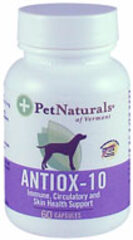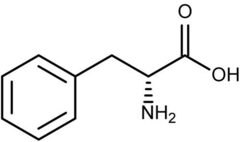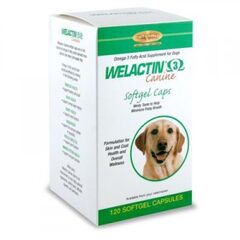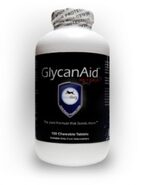 Resveratrol for Dog Arthritis Management
Resveratrol for Dog Arthritis Management
Resveratrol, a type of bioflavonoid produced by several plants when they are attacked by bacteria or fungi, has been the subject of many clinical tests, particularly its anti-cancer and anti-inflammatory properties. It has been observed that this bioflavonoid can lower blood sugar levels and also has a brilliant effect on the cardiovascular system. It truly is no surprise that resveratrol is popular as a nutritional supplement.
Resveratrol Benefits: The Fight Against Dog Arthritis and More
Despite the limited data about the effects of resveratrol in dogs, in these few trials, it has been shown that resveratrol was beneficial to dogs. Evidently resveratrol also assists in bodyweight management. It has in fact beewnshown to improve the life span of animals trialled on resveratrol.
A promising facet of resveratrol research in dogs is its potential to prevent or slow particular kinds of cancer in dogs. In experiments performed by the National Cancer Institute, resveratrol benefits dogs thanks to its ability to prevent cancer. Another beneficial property of resveratrol is its ability to suppress inflammation. Subsequently, vets are recommending the use of resveratrol supplements as a remedy for dog arthritis. Apart from clinical studies, there are a lot of testimonies from dog owners who claim that when their dogs were given resveratrol they became leaner, more alert and more energetic.
Resveratrol: The Bottom line
One of the more trusted resveratrol dietary supplements available in the market is Source Naturals Resveratrol 200. Source Naturals Resveratrol 200 contains 200 mg of pure resveratrol. It also contains Red Wine and Polygonum cuspidatum root extract. Before choosing to use Source Naturals Resveratrol 200 always consult the vet first. While the supplement contains only 10 mg of red wine extract, you will need to observe how the dog responds to the product. Do not forget that grapes are toxic to dogs, so of course if the puppy experiences diarrhea, abdominal pain or stops eating, stop administering the product or service and seek advice from your veterinarian. However, no reports have suggested.

 Cells are the basic building blocks of the body. When the cells are
not healthy or are attacked by a bacteria or virus can lead to disease.
Cells are the basic building blocks of the body. When the cells are
not healthy or are attacked by a bacteria or virus can lead to disease.
 Dietary supplements are gaining more attention especially in the
treatment of dog arthritis. Examples of such dietary supplement are the
ones containing D-Phenylalanine, which is an amino acid found in plants,
bacteria and milk. D-Phenylalanine has analgesic properties because it
is able to promote the body’s production of endorphins. As a result,
D-Phenylalanine supplements are now being utilized in dog arthritis
treatment plans.
Dietary supplements are gaining more attention especially in the
treatment of dog arthritis. Examples of such dietary supplement are the
ones containing D-Phenylalanine, which is an amino acid found in plants,
bacteria and milk. D-Phenylalanine has analgesic properties because it
is able to promote the body’s production of endorphins. As a result,
D-Phenylalanine supplements are now being utilized in dog arthritis
treatment plans.  Dog arthritis is a crippling disease. When the progress of the
disease is left unchecked, it can lead to “bone to bone” contact. This
can be a very painful for the arthritic dog as there is no longer enough
cartilage protecting the bone.
Dog arthritis is a crippling disease. When the progress of the
disease is left unchecked, it can lead to “bone to bone” contact. This
can be a very painful for the arthritic dog as there is no longer enough
cartilage protecting the bone. Obesity has become an alarming medical condition. A study made in
2008 revealed that there are about 500 million people worldwide who are
obese. Another study made in the same year was done by the Association
of Pet Obesity Prevention found that there about 33 million dogs in the
US that are overweight or obese and this number equates to 44% of the
total population. The study shows that the problem of obesity has
actually spilled over to man’s best friend.
Obesity has become an alarming medical condition. A study made in
2008 revealed that there are about 500 million people worldwide who are
obese. Another study made in the same year was done by the Association
of Pet Obesity Prevention found that there about 33 million dogs in the
US that are overweight or obese and this number equates to 44% of the
total population. The study shows that the problem of obesity has
actually spilled over to man’s best friend. In the advanced stages of the disease, dog arthritis can severely
diminish a dog’s quality of life. Experiencing chronic and acute pain at
the same time can render a dog almost completely immobile. Hence, dog
owners need to take action to maintain their
In the advanced stages of the disease, dog arthritis can severely
diminish a dog’s quality of life. Experiencing chronic and acute pain at
the same time can render a dog almost completely immobile. Hence, dog
owners need to take action to maintain their  Welactin is a supplement, which contains omega-3 from a combination
of different fish oils. Omega-3 has been proven to be good for the dog’s
skin and coat, and is essential for the normal development of the dog’s
retina and visual cortex. In addition, omega-3 prevents certain types
of cancers and can help combat against allergies, autoimmune conditions,
yeast infections, heart disease and hypertension.
Welactin is a supplement, which contains omega-3 from a combination
of different fish oils. Omega-3 has been proven to be good for the dog’s
skin and coat, and is essential for the normal development of the dog’s
retina and visual cortex. In addition, omega-3 prevents certain types
of cancers and can help combat against allergies, autoimmune conditions,
yeast infections, heart disease and hypertension.  Lyme disease is a tick-borne disease affecting animals and people
living in North America and in Europe. The disease is caused by the
Borrelia bacteria. Lyme disease gets its name from Lyme, Connecticut,
Lyme disease is a tick-borne disease affecting animals and people
living in North America and in Europe. The disease is caused by the
Borrelia bacteria. Lyme disease gets its name from Lyme, Connecticut,  Glyco-Flex is a dietary supplement believed to be
beneficial for dogs suffering from arthritis. The active ingredients of
Glyco-Flex are glucosamine, MSM or methyl-sulfonyl-methane, and Perna
Canaliculus (green lipped mussels). Glyco-Flex is manufactured by
Vetri-Science Laboratories.
Glyco-Flex is a dietary supplement believed to be
beneficial for dogs suffering from arthritis. The active ingredients of
Glyco-Flex are glucosamine, MSM or methyl-sulfonyl-methane, and Perna
Canaliculus (green lipped mussels). Glyco-Flex is manufactured by
Vetri-Science Laboratories.  Amantadine is the generic name of Symmetrel and is a
prescription drug that comes in the form 100 mg capsules or 10 mg/ml oral
liquid. In veterinary medicine, it is used in as a support therapy to NSAIDs in
the management of chronic pain relating to dog arthritis, surgery, or cancer.
Amantadine is the generic name of Symmetrel and is a
prescription drug that comes in the form 100 mg capsules or 10 mg/ml oral
liquid. In veterinary medicine, it is used in as a support therapy to NSAIDs in
the management of chronic pain relating to dog arthritis, surgery, or cancer.